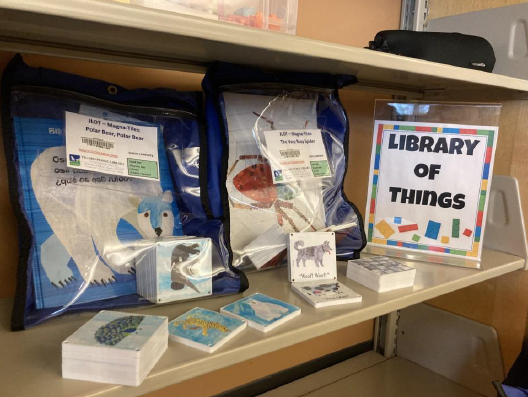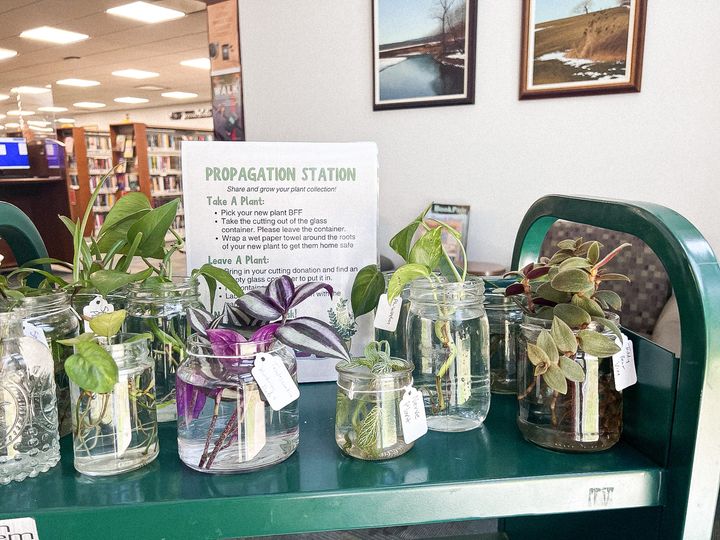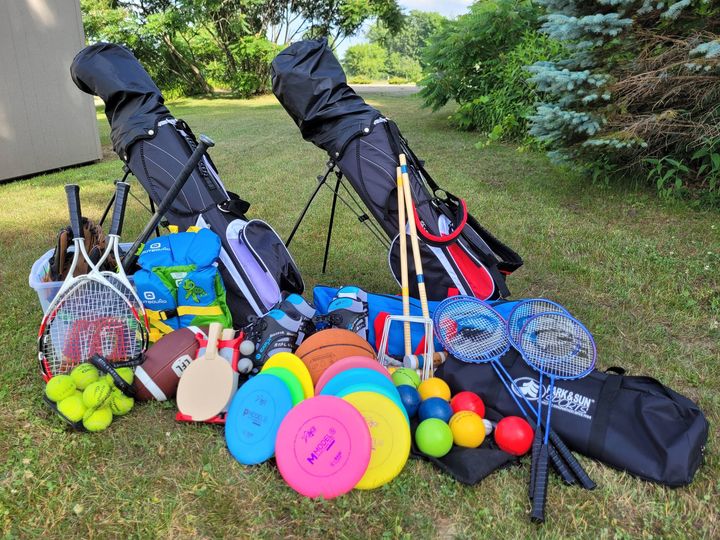Expanding collections with a Library of Things

Everybody loves a Library of Things. Stories about these popular lending libraries are popping up all over mainstream and social media. Community members are heading to their local library branch to borrow everything from cookware and tools to prom dresses, plants, bikes, and more. Lending libraries offer community members the chance to share resources and minimize environmental impact, access items they might not be able to afford, try out a new skill or hobby, and build connection with others while promoting a sharing economy. Whether your library is considering starting a brand-new lending library, or you’re looking for ideas and inspiration to expand your collection, this article is here to help.
Getting started
While it can be tempting to dive right into gathering items for your lending library—especially if inspiration has struck—most successful lending libraries start with research and planning. An important step to consider is gathering community input to understand the items that would be most useful to your community. Many libraries use surveys or community meetings to learn more about these needs. Once you’ve created a list of ideas to include in your lending library, it’s time to bring it to life. Here are some steps to take to start building your lending library:
Research and plan
- You don’t have to start from scratch—look into how other libraries and museums approached the planning process for their Libraries of Things, and explore lending library models and best practices that can inform your library’s plan.
- Determine which library departments will be involved in the lending library, and how your library will approach this collaboration.
- Develop policies and procedures for your lending library. Once you’ve answered these questions, design a detailed plan outlining the goals, target audience, budget, operational guidelines for your lending library. Establish clear policies for lending, returns, membership, late fees, waivers, and maintenance. Create a user agreement that outlines the responsibilities of borrowers. Visit this WebJunction webinar resource page for links to waiver and indemnification form examples.
Secure funding and resources
- Start small—choose one or two items or categories to offer, then build the collection gradually. This approach can help make the process easier as both patrons and staff learn about the resources.
- Once you’re ready to start building your collection, apply for grants, seek donations, or organize fundraising events. Consider partnering with local businesses or organizations for sponsorship or donations of items.
Build, launch, and promote
- Choose a location for your lending library displays and storage. It’s also important to determine how and where the items will be stored when they aren’t checked out, and whether fragile items (such as technology or electronics) might need extra packaging or protection to ensure longevity.
- Inventory and catalog items. Adding items to your library’s existing catalog will help make them easy for patrons to discover. Include detailed information such as an interesting description and examples of how the item can be used.
- Now you’re ready to launch and promote your new Library of Things! Plan a launch event to introduce the Library of Things to the community. Use local media, social media, flyers, and word-of-mouth to spread the word.
- Use social media to promote your Library of Things on an ongoing basis. Lending library posts often result in high engagement.
Measure and evaluate
- Monitor and evaluate: Reviewing the implementation and usage of the Library of Things will help to assess success and decide if any changes are necessary. The assessment can include patron feedback, ease of use, cost of maintenance, turnaround time, and circulation numbers.
- Track usage, feedback, and any issues that arise. If an item isn’t working well for your Library of Things, you might consider offering it for in-library use instead. The key factor is flexibility and openness to trying different approaches.
- Regularly assess the library's impact and make improvements based on community feedback.
Maintain and expand
- Keep items in good condition through regular maintenance and repairs.
- Seek feedback and adapt to meet changing community needs. If you started by offering just a few items, this might also be a good time to expand your Library of Things, applying these planning techniques and incorporating staff and patron feedback
Library of Things examples and inspiration

on Facebook
Your Library of Things are only limited by your imagination, but here are some ideas and inspiration to consider:
- Gardens and plants: Growing and sharing food and plants is an intrinsically communal activity well-suited for lending libraries. Seed libraries and plant libraries are two popular examples. These types of libraries are often more loosely organized than a lending library with tangible items. This WebJunction article offers a wealth of information about seed libraries. Chillicothe and Ross County Public Library (Ohio) has a Propagation Station, which gives patrons a chance to share houseplant cuttings with one another.
- Cooking: Many libraries are offering spice libraries and shared cookware to help their patrons expand their culinary skills. You can learn more in this WebJunction article, Spice of life! Adding variety to a Library of Things. Some libraries even loan out cooking or baking appliances or kits. See this Cooking Library from Washington County Cooperative Library (Oregon).
- Pets: Lending libraries aren’t just for humans! See this Geek the Library post for a slideshow of stick and ball lending libraries for canine companions. Eugene Public Library (Oregon) is offering something for all their community cat lovers—a set of robot cats available for checkout. Research has shown that cat purring can be therapeutic for people, and the robot cats were designed to emulate that experience for people seeking a sense of calm.
- Sports and outdoors: As community spaces, libraries are a great place to encourage movement, exercise, and outdoor exploration. Augusta Township Public Library (Ontario) offers a recreation lending library, including badminton sets, golf clubs, disc golf sets, fishing equipment, and kayaks. Bicycle libraries are another trending offering, like this one at Adams County Public Library (Ohio). Rancho Cucamonga Public Library (California) offers life vests for adults, children, and even dogs to help their community members safely enjoy water sport and recreation. And the outdoor fun doesn’t have to end in the colder months— Greater Sudbury Public Library (Ontario) offers a snowshoe library.
- Technology: Video game collections are perennially popular at libraries all over. See this WebJunction webinar for ideas and examples to inform your own library’s collection: Switching it Up! Creating a Video Game Collection for Your Library. Myli community library branches (Victoria, Australia) recently added a digital photo scanner to their Library of Things, testing it out by digitizing film from the library archives. See the photos in this post and explore their full collection for even more inspiration.
- Miscellaneous: The sky’s the limit when it comes to Libraries of Things. Some additional creative examples include adaptive technology and games (Des Moines Public Library in Iowa), telescopes (Eckhart Public Library in Indiana), a prom dress and formal wear closet (Johnson County Public Library in Indiana), American Girl dolls (Arlington Pubic Library in Virginia), and ukulele kits (Los Angeles Public Library).

As with all library programming and services, collaboration and planning are key to creating a successful Library of Things. The strategies outlined here can help your library to navigate the process and offer your patrons new ways to learn, engage, and have fun!
Additional resources
- The State of Libraries of Things 2024 – New report from Shareable
- Sharable’s series on Library of Things
- Library of Things group on Facebook
- Library of Things in the news, a series by webinar presenter Lindsay Delaney
- List on Wikipedia of libraries with Library of Things collections
Extend your learning
For a deeper dive and a wealth of examples, be sure to check out Library of Things: The What, Why, and How of Lending Objects, a webinar recording featuring examples and inspiration from two lending libraries. The event page also features the full slide deck, learner guide, and the chat so you can review all of the ideas shared in the live session. You can also find other resources and tools to help your library get started on your own Library of Things, including examples of Library of Things collections, video tours of Library of Things, cataloging resources, and waiver and indemnification form examples.
